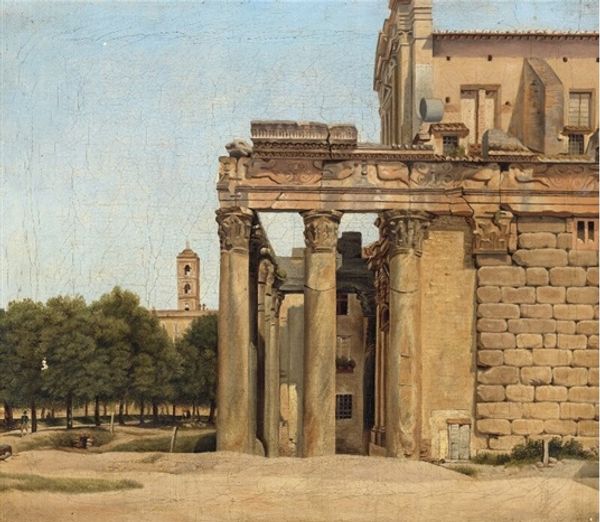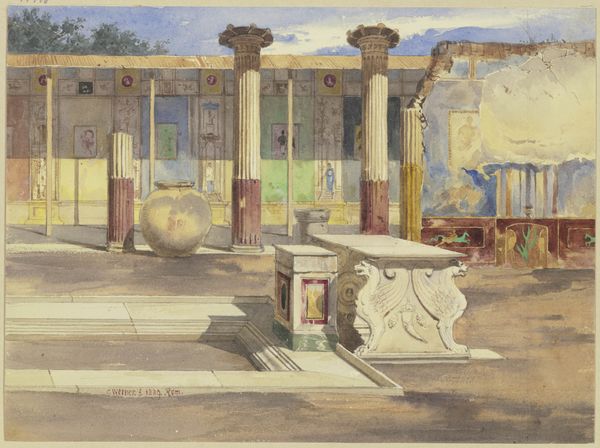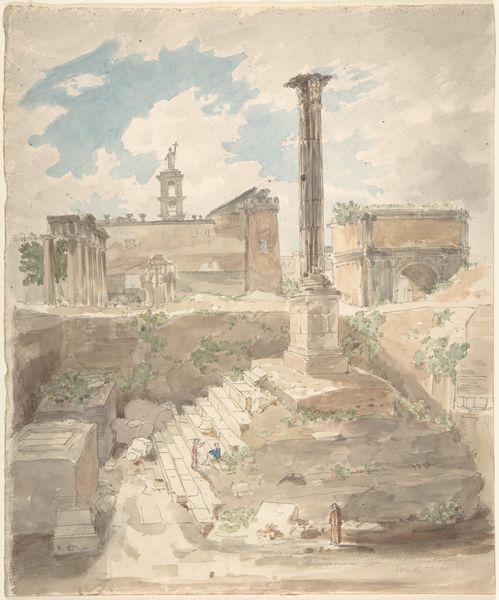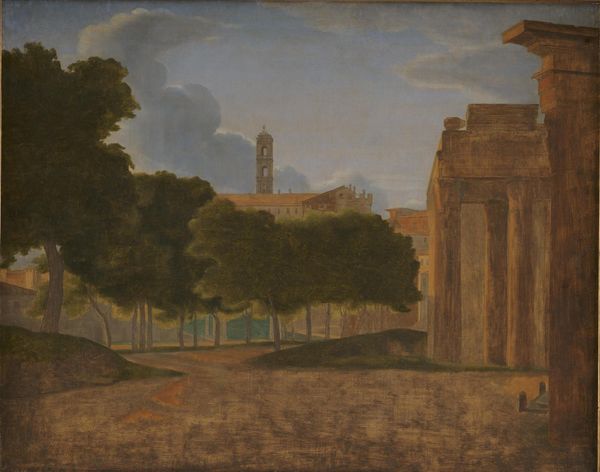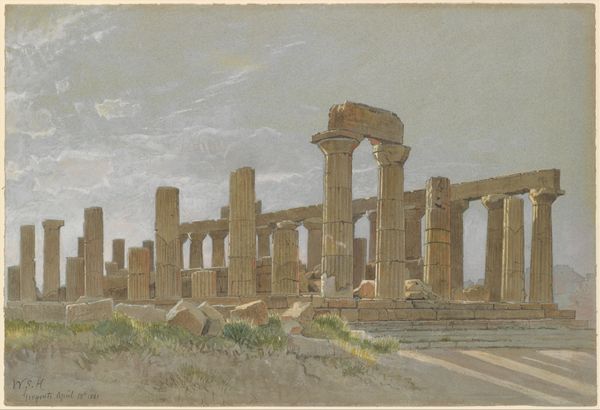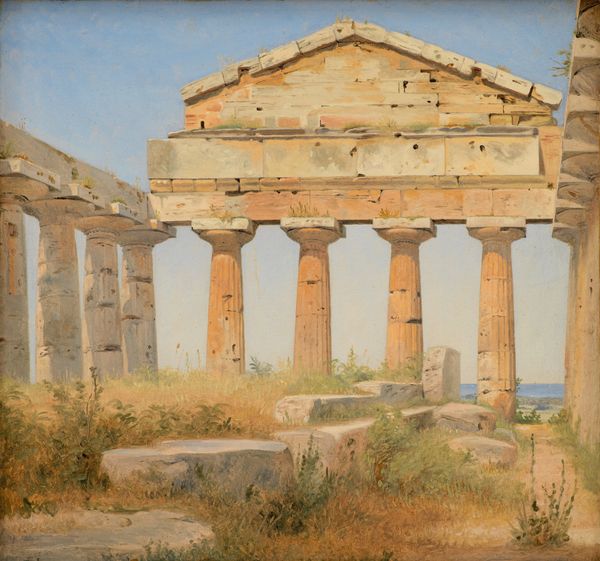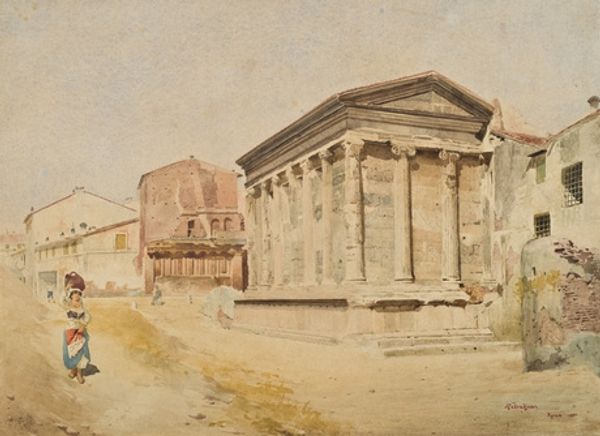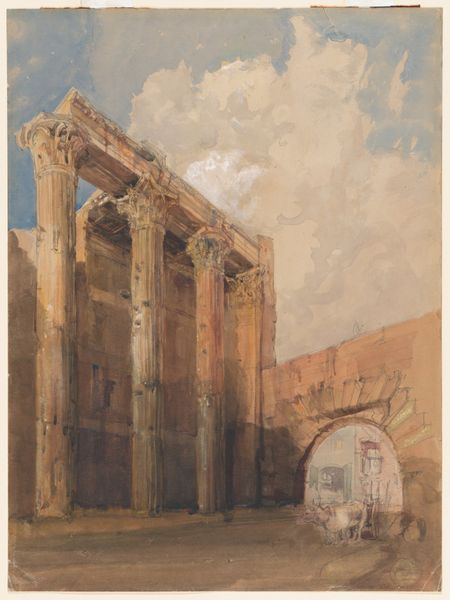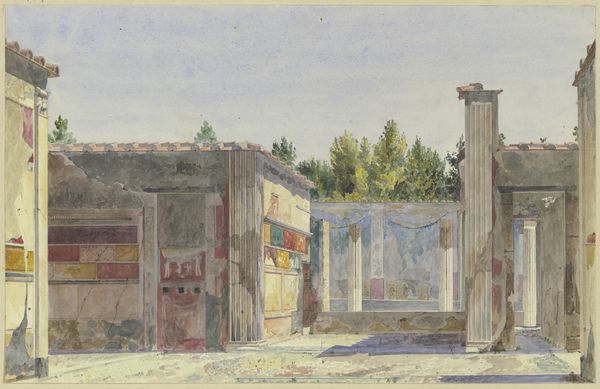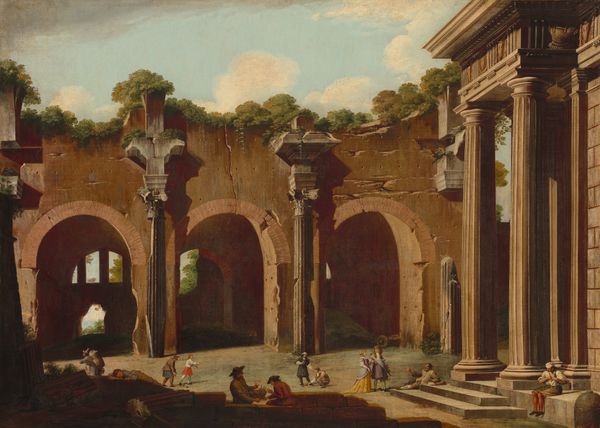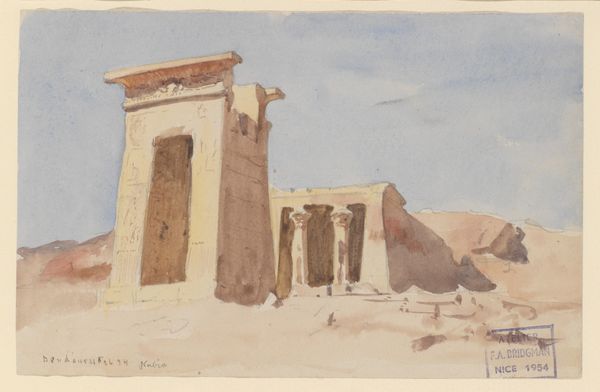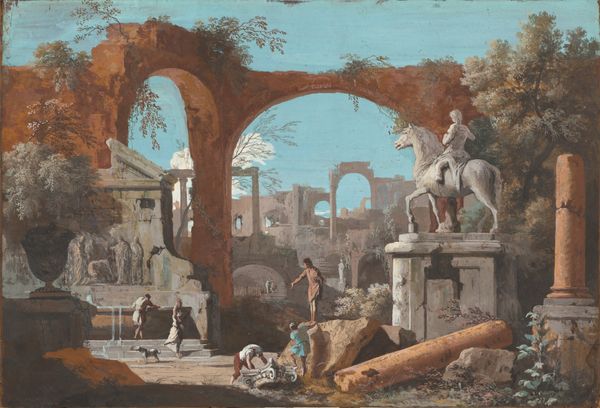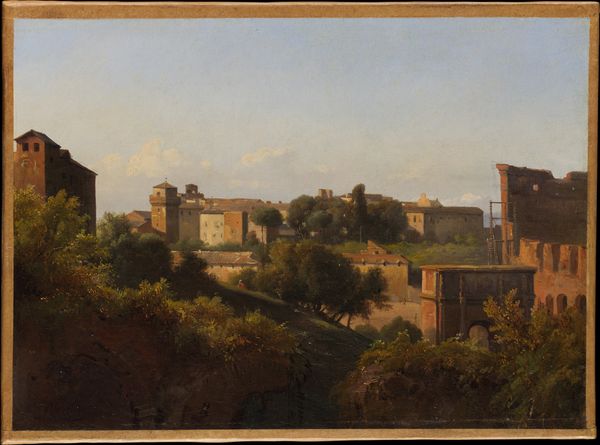
painting, paper, watercolor
#
neoclacissism
#
painting
#
landscape
#
paper
#
oil painting
#
watercolor
#
underpainting
#
romanticism
#
cityscape
#
history-painting
#
watercolor
#
realism
Dimensions: 24 cm (height) x 29 cm (width) (Netto), 33.3 cm (height) x 38.2 cm (width) x 4 cm (depth) (Brutto)
Constantin Hansen painted “The Arch of Titus in Rome” using oil on paper in 1839. Hansen, a Danish artist, painted this scene while part of the Danish artistic community living in Rome. This painting depicts the ancient Arch of Titus, which commemorates the Roman victory in the Jewish War of 70 AD, resulting in the destruction of the Second Temple in Jerusalem and the beginning of the Jewish diaspora. Hansen’s choice to paint this monument speaks to a broader 19th-century European fascination with classical antiquity, yet it also subtly engages with themes of power, conquest, and cultural memory. The muted colors and the somewhat detached perspective evoke a sense of historical distance. The arch stands as a silent witness to centuries of shifting empires and changing cultural landscapes. In capturing this monument, Hansen prompts reflection on the legacies of empire and the complex layers of history embedded within the Roman landscape. While seemingly a neutral depiction, the painting carries the weight of historical narratives that continue to resonate today.
Comments
statensmuseumforkunst almost 2 years ago
⋮
As a counterweight to the large figure paintings created for the annual exhibitions at Charlottenborg in Copenhagen, the artists of the Golden Age also painted small, unpretentious oil studies where they could be unfettered by the conventions and expectations of the time. One example would be Constantin Hansen's small-scale painting of the Titus Arch near the Forum Romanum. He depicted the arch from a rather unconventional angle. It is not viewed from the front, but from the side, causing the facade to appear strongly foreshortened. The painting does not provide a representative impression of the building, meaning that it was not intended as a tourist pic ture. It is a study done exclusively for the artist's own personal use. The angle clearly reveals an inspiration from Eckersberg. However, Hansen has gone to greater extremes than his tutor ever did in terms of separating architectural form from the function and meaning that is usually associated with a building.
Join the conversation
Join millions of artists and users on Artera today and experience the ultimate creative platform.
statensmuseumforkunst almost 2 years ago
⋮
During his time in Rome Constantin Hansen painted oil studies in the open air to provide variety in between his more complex figure compositions. Outdoors, he was free of any constraints concerning his contemporaries’ expectations as regards motif, method of painting, and composition. An unconventional angle One of his freest and most original studies is this picture of the Titus Arch near the Forum Romanum. He depicted it from a rather unconventional angle. The arch is not seen from the front, but from the side, thereby dramatically shortening the façade. The picture does not give a representative view of the building, meaning that it was not a travel or tourist picture intended for audiences back in Copenhagen. It is a study done exclusively for the artist’s own sake. Influenced by Eckersberg The picture shows clear signs of the influence of the Roman architectural studies done by C. W. Eckersberg (1783-1853), Constantin Hansen’s teacher. Here, however, Hansen went further than Eckersberg ever did. He completely disengaged the architectural form from the function and significance traditionally associated with a building. A break with the norms The colour scheme also marks a break with the norms of the day. The artist shows a remarkable sense of the delicate, changing hues of the sunlight and in the shadows. With this picture, Hansen points towards the treatment of colour employed by the Impressionists 30 years later.
